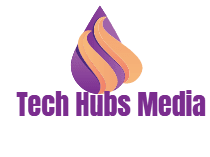Procurement is vital for businesses seeking efficiency and value in their operations. Deploying the right technology can revolutionize this often complex task, transforming it into a streamlined, cost-effective system. Automated Request for Proposal (RFP) software is at the forefront of this transformation. This technology significantly benefits organizations of all sizes by simplifying and enhancing the procurement process. Below, we delve into the advantages and utilization of automated RFP solutions in modern procurement strategies.
Streamlining Vendor Selection with RFP Automation Tools

The vendor selection phase is
critical, as it determines the quality, cost, and timeliness of the services or
products acquired. RFP automation tools streamline this phase by enabling
businesses to evaluate bids side by side with ease. Automated scoring matrices
help procurement teams objectively compare vendor offerings against established
criteria, simplifying the decision process.
Moreover, automated workflows ensure
that all stakeholders receive timely notifications and reminders throughout the
evaluation period. This leads to a more cohesive decision process without
unnecessary delays. The transparent nature of these tools provides
accountability and full visibility into how and why decisions are made.
The software also allows procurement
teams to communicate efficiently with potential vendors during selection.
Receiving clarification on proposals or negotiating terms can be managed
directly within the platform, creating a centralized repository for all
correspondence. This enhancement is invaluable in maintaining a clear and
consistent line of communication.
Another noteworthy benefit is the
ability to manage a multitude of proposals simultaneously. This ability ensures
businesses can handle large volumes of vendor interactions during peak
procurement periods without declining efficiency or accuracy.
Enhancing Collaboration and Communication through RFP Software

Collaboration is a cornerstone of any
successful procurement process. RFP software facilitates collaboration by
allowing multiple team members to work on the same project simultaneously,
regardless of their location. This level of connectivity ensures that all
pertinent parties can contribute their expertise when evaluating proposals.
Centralizing RFP responses also means
that feedback and discussions are easily
trackable. With all comments and edits stored in one place, there's less risk
of miscommunication or lost information, which often occurs with email threads
or disconnected documents. Consequently, teams can reach a consensus more
rapidly and with greater confidence.
Communication with vendors is
similarly elevated, complementing collaboration. Platforms often provide
dedicated portals through which vendors can submit responses and receive
updates. These portals ensure a smooth information exchange, maintaining
professional communication while protecting the integrity of the RFP process.
Some solutions even provide analytics
and reporting features, enabling teams to evaluate their collaboration efforts.
Such insights can reveal opportunities for process improvements, leading to
even more effective partnerships internally and with vendors.
Cutting Costs and Reducing Errors in Procurement Processes
Cost reduction is a compelling reason
to adopt automated RFP software. Businesses can allocate their human resources
to more strategic activities that support growth rather than time-consuming
administrative tasks by minimizing the need for extensive manual labor.
Automation also reduces the likelihood of costly mistakes that result from
manual entry or oversights during the review process.
Error reduction is equally important.
Automated systems minimize the possibility of human error in data entry and
calculations that often accompany the traditional RFP processes. Consistency in
format and evaluation criteria provided by the software further prevents misunderstandings or subjective
assessments that can skew vendor selection.
The cumulative cost and error
reduction effect is significant in the long term. Over time, businesses may
observe a noticeable decrease in operational expenses while improving
procurement outcomes. The initial investment in automated RFP software often yields
substantial returns on investment.
Efficiency gains also extend to the
vendors who appreciate faster response times and clearer communication about
the procurement process's requirements and outcomes. This increased
satisfaction can lead to better-negotiated contracts and long-term
relationships with suppliers, providing additional fiscal advantages to the
buying organization.
Overall, automated RFP software
significantly enhances the procurement process's efficiency, accuracy, and
collaboration. By reducing costs, minimizing errors, and streamlining
communication, organizations can make more informed decisions and build
stronger vendor relationships.









.jpg)


0 Comments